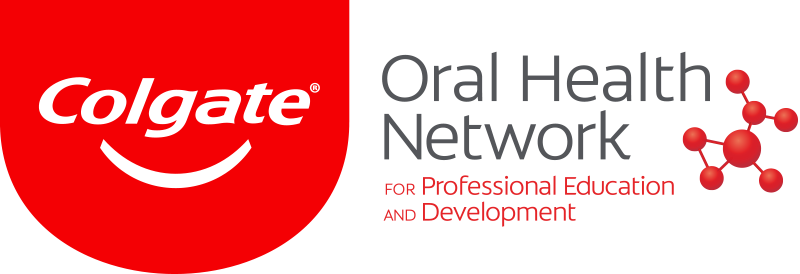Mark Rutenberg wants you to look for this four-letter word: TEST. Rutenberg is the chairman/CEO of OralCDx, a company that provides the BrushTest, which can determine whether a patient has pre-cancerous or cancerous cells. He says his 'test' is different from others on the market because it’s the only minimally invasive diagnostic procedure that actually tests the tissue.
“When people sit in a dental chair, that dental chair is an aid that is cleared by the FDA in filling a cavity, or doing a root canal, but does anyone think that the chair does the root canal? No. It’s just an aid in doing any of those things a dentist might do,” Rutenberg said.
“If I sell you a flashlight, and I tell you, ‘This is an aid in the oral cavity exam,’ that might make sense. If I take a flashlight and color it blue, and I tell you, ‘This is an aid in detecting oral cancer,’ you might think that sounds about right,” he said. “If you want to use a light, fine. But know that it’s not a test. There are only two ways to know that the little spots in your patients’ mouth are not cancerous or pre-cancerous: a brush biopsy or a scalpel biopsy. If you have not tested the tissue, you do not know.”
The OralCDx BrushTest works by painlessly removing and testing 'everyday' tiny oral spots. A small brush is used to quickly collect a specimen for computer-assisted laboratory analysis.
“If you want to use a special light to light up the mouth, go right ahead, but the standard protocol is that you use a white light exam, carefully examine the mouth and especially look for everyday tissue change,” Rutenberg said. “Dentists are used to looking for cancer; they’re not used to looking for everyday tissue changes. If you find everyday tissue changes, you should BrushTest them. If you don’t know what caused it, you brush it.
“If you only use the light and you look in a patient’s mouth and say, ‘I don’t see any cancer,’ you’re only fooling yourself and your patient.”
If a spot is found by OralCDx to contain unhealthy cells (dysplasia), it typically takes years before those cells can penetrate the basement membrane and cause any harm. With the BrushTest, a dentist can be sure that the spot needs to be removed and oral cancer will never have a chance to develop.
“This is a real test — the brush biopsy is as sensitive as a scalpel biopsy,” he said. “If you’re going to use a ‘test’ that says whether or not your patient has a life-threatening disease, you better know that it works. This is not a cosmetic procedure to create a pretty smile. This is life and death.”
ISTANBUL, Turkey: Digital smile design (DSD) programs have become instrumental in dental treatment, enabling dentists and patients to plan treatments in ...
Modern restorative and prosthetic dentistry have undergone significant advances over the last five years. Innovations in dental materials have truly ...
The common misconception that oral health is not interlinked with overall health is slowly being dispelled by dental professionals who continue to ...
SINGAPORE: Culture meets science in a recent study by oral health researchers in Singapore. The findings indicate that, in Singapore, clinicians need to ...
GENEVA, Switzerland: FDI World Dental Federation (FDI) recently released its first white paper on endodontic care, providing an important resource for ...
SOKOTO, Nigeria: Noma, a rare disease found predominantly in underserved areas, causes rapid progressive destruction, or gangrene, of the tissue of the face...
WASHINGTON, US: Patients who are unhappy with their orthodontic treatment must be allowed to speak out about it and file complaints if necessary. This was ...
TOKYO, Japan: Oral disease contributes significantly to absenteeism globally, constituting between 9.06% and 26.7% of total illness-related absenteeism. The...
KOBLACH, Austria: Digitisation in the dental industry is unstoppable—it heralds change and, at the same time, offers unlimited potential. In addition to a...
Limited workspace is a common problem in endodontic treatments. Before the arrival of pre-bendable NiTi files, a lot of RCT’s seemed to be almost ...
Live webinar
Mon. 29 April 2024
12:30 pm EST (New York)
Prof. Roland Frankenberger Univ.-Prof. Dr. med. dent.
Live webinar
Tue. 30 April 2024
1:00 pm EST (New York)
Live webinar
Fri. 3 May 2024
1:00 pm EST (New York)
Live webinar
Tue. 7 May 2024
8:00 pm EST (New York)
Live webinar
Thu. 9 May 2024
8:00 pm EST (New York)
Live webinar
Mon. 13 May 2024
9:00 am EST (New York)
Live webinar
Mon. 13 May 2024
1:00 pm EST (New York)
Doc. MUDr. Eva Kovaľová PhD.



 Austria / Österreich
Austria / Österreich
 Bosnia and Herzegovina / Босна и Херцеговина
Bosnia and Herzegovina / Босна и Херцеговина
 Bulgaria / България
Bulgaria / България
 Croatia / Hrvatska
Croatia / Hrvatska
 Czech Republic & Slovakia / Česká republika & Slovensko
Czech Republic & Slovakia / Česká republika & Slovensko
 France / France
France / France
 Germany / Deutschland
Germany / Deutschland
 Greece / ΕΛΛΑΔΑ
Greece / ΕΛΛΑΔΑ
 Italy / Italia
Italy / Italia
 Netherlands / Nederland
Netherlands / Nederland
 Nordic / Nordic
Nordic / Nordic
 Poland / Polska
Poland / Polska
 Portugal / Portugal
Portugal / Portugal
 Romania & Moldova / România & Moldova
Romania & Moldova / România & Moldova
 Slovenia / Slovenija
Slovenia / Slovenija
 Serbia & Montenegro / Србија и Црна Гора
Serbia & Montenegro / Србија и Црна Гора
 Spain / España
Spain / España
 Switzerland / Schweiz
Switzerland / Schweiz
 Turkey / Türkiye
Turkey / Türkiye
 UK & Ireland / UK & Ireland
UK & Ireland / UK & Ireland
 Brazil / Brasil
Brazil / Brasil
 Canada / Canada
Canada / Canada
 Latin America / Latinoamérica
Latin America / Latinoamérica
 USA / USA
USA / USA
 China / 中国
China / 中国
 India / भारत गणराज्य
India / भारत गणराज्य
 Japan / 日本
Japan / 日本
 Pakistan / Pākistān
Pakistan / Pākistān
 Vietnam / Việt Nam
Vietnam / Việt Nam
 ASEAN / ASEAN
ASEAN / ASEAN
 Israel / מְדִינַת יִשְׂרָאֵל
Israel / מְדִינַת יִשְׂרָאֵל
 Algeria, Morocco & Tunisia / الجزائر والمغرب وتونس
Algeria, Morocco & Tunisia / الجزائر والمغرب وتونس
 Middle East / Middle East
Middle East / Middle East
:sharpen(level=0):output(format=jpeg)/up/dt/2024/04/India-begins-assessing-its-400%E2%80%AFdental-colleges.jpg)
:sharpen(level=0):output(format=jpeg)/up/dt/2024/04/Moritz-Kebschull-is-new-president-of-the-European-Federation-of-Periodontology.jpg)
:sharpen(level=0):output(format=jpeg)/up/dt/2024/04/Shutterstock_1017664873.jpg)
:sharpen(level=0):output(format=jpeg)/up/dt/2024/04/Treating-periodontal-disease-reduces-atrial-fibrillation-recurrence.jpg)
:sharpen(level=0):output(format=jpeg)/up/dt/2024/04/3Shape-charts-sustainable-course-with-release-of-comprehensive-sustainability-report-2023.jpg)








:sharpen(level=0):output(format=png)/up/dt/2013/04/Dentsply-Sirona.png)
:sharpen(level=0):output(format=png)/up/dt/2015/09/Curaden.png)
:sharpen(level=0):output(format=png)/up/dt/2019/04/logo.png)
:sharpen(level=0):output(format=png)/up/dt/2013/01/Amann-Girrbach_Logo_SZ_RGB_neg.png)
:sharpen(level=0):output(format=png)/up/dt/2022/06/RS_logo-2024.png)
:sharpen(level=0):output(format=png)/up/dt/2014/02/MIS.png)
:sharpen(level=0):output(format=jpeg)/up/dt/2017/01/4416ce4297cdb660fea996bbe4ec4ca1.jpg)

:sharpen(level=0):output(format=jpeg)/up/dt/2024/04/India-begins-assessing-its-400%E2%80%AFdental-colleges.jpg)
:sharpen(level=0):output(format=gif)/wp-content/themes/dt/images/no-user.gif)
:sharpen(level=0):output(format=jpeg)/up/dt/2023/09/Study-evaluates-whether-AI-can-craft-a-universally-aesthetically-pleasing-restoration.jpg)
:sharpen(level=0):output(format=jpeg)/up/dt/2024/03/Shutterstock_1154258845.jpg)
:sharpen(level=0):output(format=jpeg)/up/dt/2023/09/Historically-oral-health-has-been-separated-from-the-rest-of-health-.jpg)
:sharpen(level=0):output(format=jpeg)/up/dt/2024/04/oral-health-awareness-is-generally-low-in-singapore.jpg)
:sharpen(level=0):output(format=jpeg)/up/dt/2019/05/Endodontics-white-paper-calls-for-treatment-to-consider-patient-health_780-x-439.jpg)
:sharpen(level=0):output(format=png)/up/dt/2018/09/-35BB150CF334E030B223382F0A08199492CCB33E32A00455DF-pimgpsh_fullsize_distr.png)
:sharpen(level=0):output(format=jpeg)/up/dt/2023/06/Agreement-frees-thousands-of-clear-aligner-patients-from-non-disclosure-agreements.jpg)
:sharpen(level=0):output(format=jpeg)/up/dt/2023/08/Japanese-researchers-explore-whether-workplace-dental-check-ups-reduce-absenteeism-for-dental-care.jpg)
:sharpen(level=0):output(format=jpeg)/up/dt/2021/07/Amann-Girrbach-to-present-new-solutions-for-interdisciplinary-cooperation-at-IDS-2021..jpg)
:sharpen(level=0):output(format=png)/up/dt/2017/03/469630b7ca3567d181d4c45c1c429071.png)






:sharpen(level=0):output(format=jpeg)/up/dt/2024/04/India-begins-assessing-its-400%E2%80%AFdental-colleges.jpg)
:sharpen(level=0):output(format=jpeg)/up/dt/2024/04/Moritz-Kebschull-is-new-president-of-the-European-Federation-of-Periodontology.jpg)
:sharpen(level=0):output(format=jpeg)/up/dt/2024/04/Shutterstock_1017664873.jpg)
:sharpen(level=0):output(format=jpeg)/wp-content/themes/dt/images/3dprinting-banner.jpg)
:sharpen(level=0):output(format=jpeg)/wp-content/themes/dt/images/aligners-banner.jpg)
:sharpen(level=0):output(format=jpeg)/wp-content/themes/dt/images/covid-banner.jpg)
:sharpen(level=0):output(format=jpeg)/wp-content/themes/dt/images/roots-banner-2024.jpg)
To post a reply please login or register